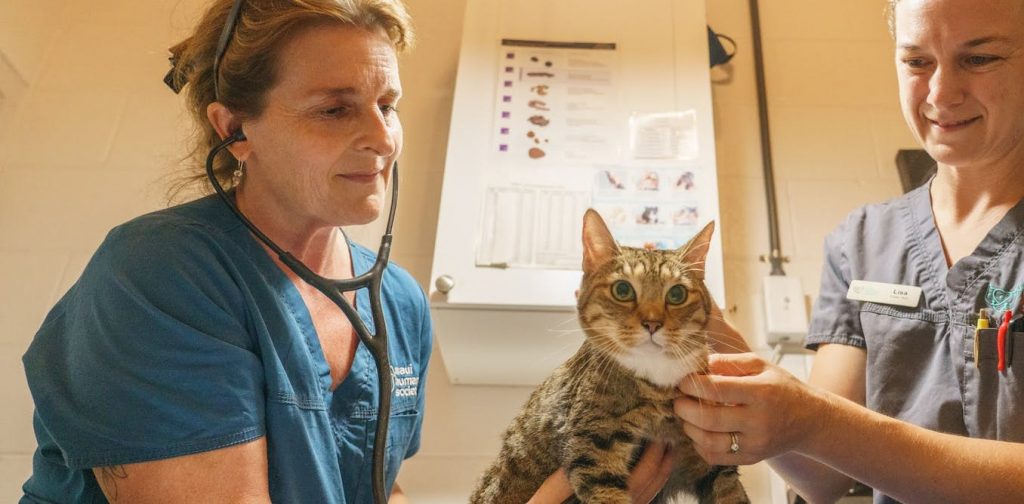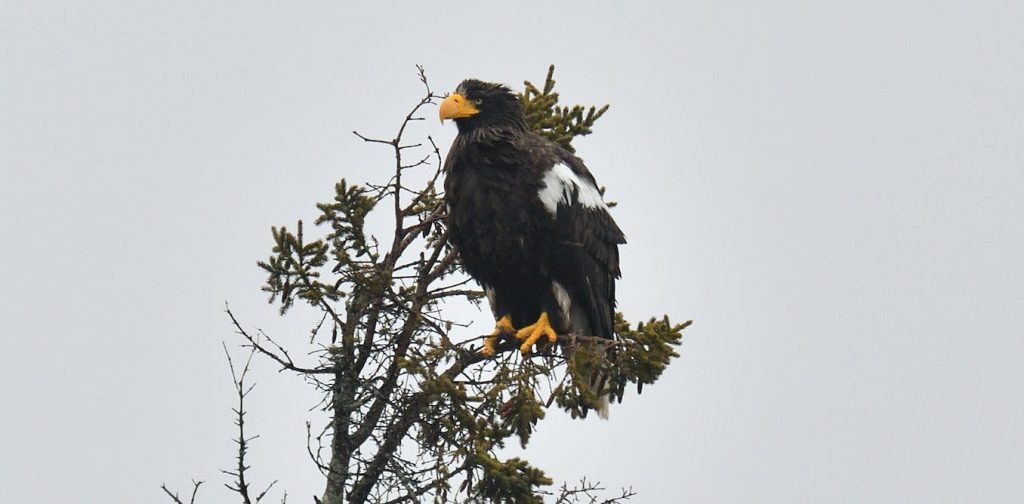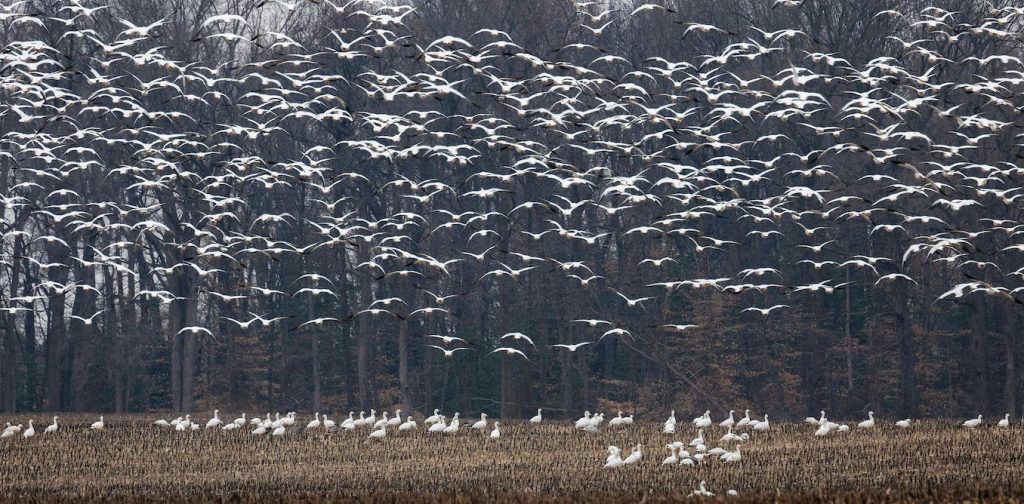By ‘helping’ wild animals, you could end their freedom or even their lives – here’s why you should keep your distance
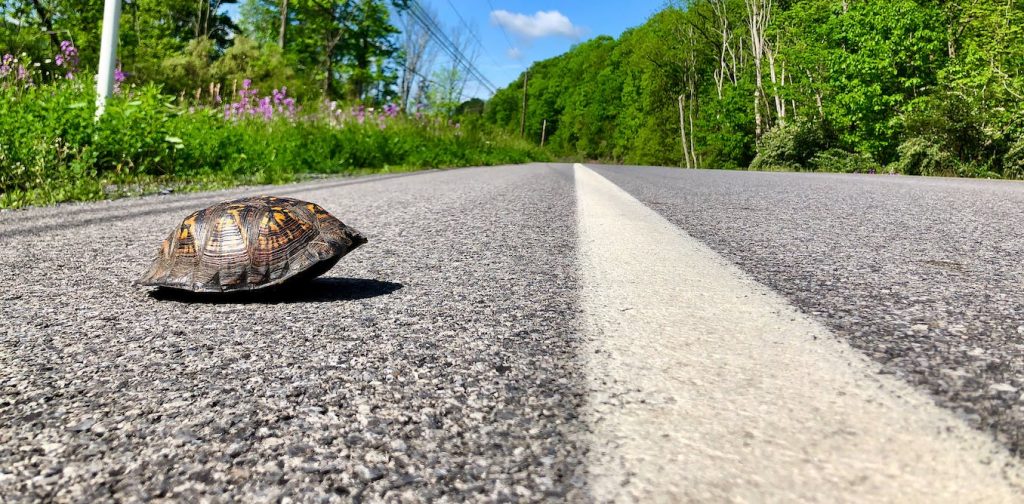
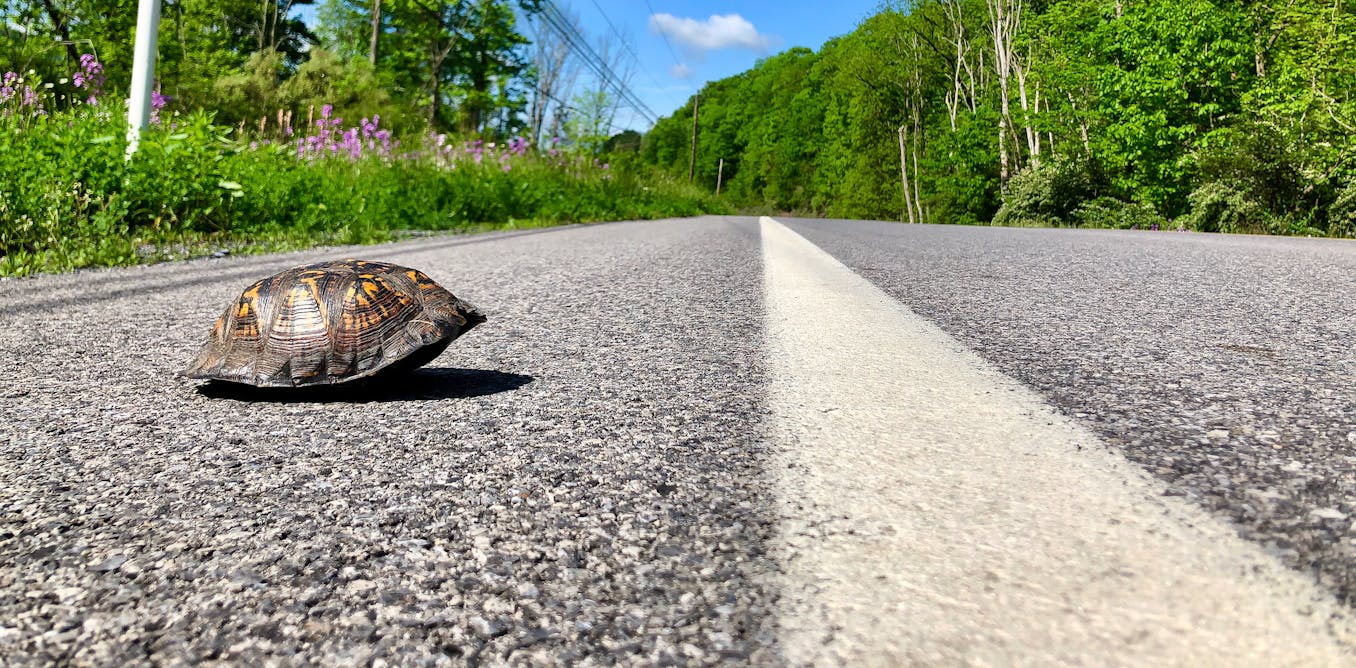
For anyone who enjoys nature, summer is a fascinating time to be outside. Animals are on the move: Turtles are nesting, baby birds are testing their wings, snakes are foraging and young mammals are emerging.
In central Pennsylvania, where I live, last year’s hatchling painted turtles have overwintered in their nests and emerged looking like tiny helpless snacks for raccoons and ravens. I’ve already rescued a baby killdeer – a shorebird that nests in parking lots – that ran off the road and got stuck in a grate. And I’ve watched an eastern chipmunk prey on a nest of towhee chicks.
I moved the killdeer to safety because it had fallen into what we call an “ecological trap.” Humans create these traps when we degrade habitat that looks suitable to animals. For killdeer, parking pads and roofs give off all the vibes of a great nesting site – except for the drains – and they have less natural habitat available these days.
But I didn’t intervene with the towhees. Their exposed nest site may have been a bad parental decision, or perhaps the chicks’ begging called too much attention. Either way, natural selection helped ensure that these birds and their genes were unlikely to survive. Ultimately, that may be better for the population and species than if I had intervened.
As a wildlife biologist, I know that relocating animals can be bad from a scientific perspective. It also can easily harm the creature you want to help.
Based on my experience as a scientist and university teacher, I’ve developed guidelines for when to get involved in the lives of animals I encounter outside. When I do intervene, it is after carefully considering the potential reasons for the animal’s situation, the species’ population status and the potential harm my actions might inflict upon the whole population – not just on one adorable creature.
A Humane Society wildlife expert explains what to know about backyard wildlife.
Reasons for caution
Wild animals have genetic associations with specific habitats that have evolved over many generations. Relocating them can disrupt those connections.
Moving animals means they can’t contribute their offspring and genes to the local population through breeding. That could be catastrophic for species with slow population growth, like many reptiles, who may take years to mature and might only manage a few successful broods in their lifetime.
For species like these, mature females are critical to keeping population sizes high. When populations are small, they lose genetic diversity that helps them resist environmental change.
Moving wildlife also may introduce new genes elsewhere, leading to genetic shifts over time that didn’t evolve through natural selection. Animals that are successful in a region tend to leave more offspring, and the heritable genetic variation tied to that success becomes more common and associated with the local environment. These are important relationships to safeguard.
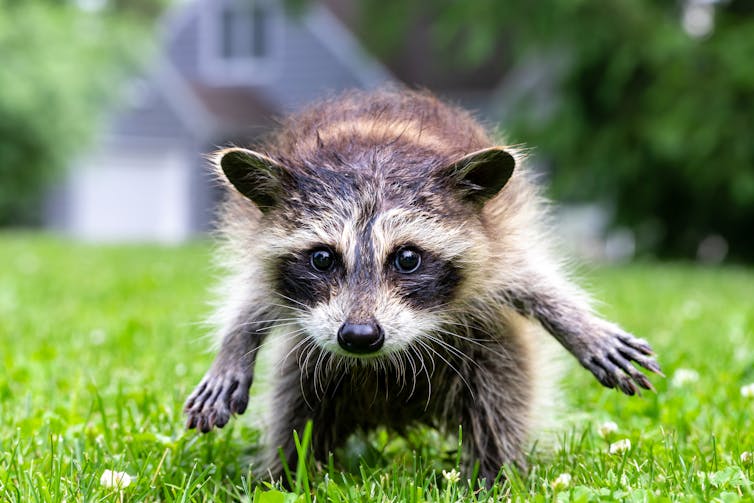 A young raccoon that appeared abandoned was soon retrieved by its mother. Raccoons spend many months with their parent after leaving the nest. Julian Avery, CC BY-ND
A young raccoon that appeared abandoned was soon retrieved by its mother. Raccoons spend many months with their parent after leaving the nest. Julian Avery, CC BY-ND
Moving animals also can cause immediate harm. Transported animals often can’t survive in a territory other animals have already claimed, or the new arrivals may do damage – for example, by preying on vulnerable local species. Wildlife managers may have to move them into captivity or even euthanize them.
Some species can spread pathogens to other wildlife or humans. At a minimum, moving animals can disorient them and make it hard for them to settle, find food and water or avoid predators.
It’s usually best to keep your distance
In general, your default choice should be not to interfere or interact with wildlife. Knowing that humans are nearby stresses animals. It makes them move away or forage and behave differently, and it can harm their body condition by triggering stress responses that ultimately reduce their fertility.
It’s especially common for people to see baby animals or birds, seemingly alone, and feel compelled to help. In fact, the parents may have secured their young and be actively caring for them, or the young animals may already be independent.
The amount of parental care that different species provide ranges from zero to a lot. For example, once a female turtle chooses a nest site with warm temperatures and the right amount of soil moisture, she lays her eggs and moves on. Hatchling turtles don’t need help unless they’re near pets or roads.
Rattlesnakes will bask in the sun to help their embryos be born live and healthy. Many mammals hide their young during the day and care for them for months.
Bluebirds and tree swallows work tirelessly to feed their young, even after fledging. In contrast, other birds kick their young out at an early stage so they can start the next clutch.
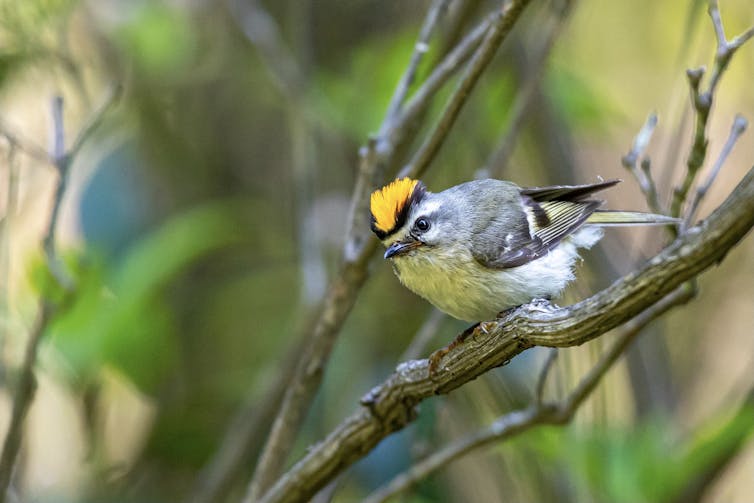 Golden-crowned kinglets, like this male, work together to raise 1-2 large broods a season. The male may even take over feeding fledglings as the female prepares the next clutch of 3-11 eggs. Julian Avery
Golden-crowned kinglets, like this male, work together to raise 1-2 large broods a season. The male may even take over feeding fledglings as the female prepares the next clutch of 3-11 eggs. Julian Avery
Whatever the species, young and inexperienced animals without parents nearby may either be learning how to navigate or have been left hidden by their parents on purpose.
Parents do occasionally abandon their young. They may do it on purpose because their offspring are unfit, or because the parents aren’t fit enough to raise them. Or perhaps the parents have gotten lost. Whatever the reason, natural selection likely means these individuals and their gene complexes will not continue forward – and that benefits the species overall.
Put the animal’s needs before your own
It’s well established that getting close to nature is good for people’s mental health. I believe it’s very important to foster human connections to nature and facilitate these connections for people who have little exposure to the outdoors.
I advocate a mindful and hands-on approach to being outside. For example, I don’t touch animals that are rare unless it’s part of my research or covered by permits. If I handle an aquatic animal, I make sure my hands are wet and free of chemicals.
However, animals’ needs should come first. Whenever humans are active in an animal’s habitat, they can degrade it and lead the animals to seek other space.
Some wild animals may be abandoned or alone acting strangely because they are sick or generally unfit. People who handle these animals risk contracting zoonotic diseases, such as rabies, plague and avian influenza. Sometimes an unhealthy animal needs to be left alone to avoid spreading infection.
There also are animals that pretend to be injured or dead as a defense strategy. A casual observer may think a rescue is necessary, but don’t make assumptions. For example, Virginia opossums play dead in an involuntary fixed response to fear called defensive thanatosis. They can’t control it, but within minutes to hours, they’re up and back to normal.
When and how to help
Here are some guidelines for when and how to intervene in ways that minimize harm to wildlife.
First, don’t relocate animals over significant distances. An animal that accidentally hitches a ride over long distances, such as a treefrog under your bumper, shouldn’t be released in a new host area.
Helping an animal cross a busy road is OK if you move it in the direction in which it is already headed. This is particularly true for animals that live a long time and reproduce slowly, like box turtles, which are declining across North America. Ensuring the survival of a single adult female box turtle can be very important to the success of a local population.
Second, respect the rules at national, state and local parks. Parks often protect at-risk species that can’t safely interact with humans. For example, desert tortoises may urinate as a defense when picked up, which reduces their internal water supply.
Learn to identify common species that can handle human curiosity and make good ambassadors for biodiversity. Many state agencies have a website or atlas for major wildlife groups that will help you learn which species are widespread or more rare. Most ponds have a common frog that’s sure to catch your eye.
Third, if you think an animal is truly in danger, call a local game warden, wildlife officer, rehab professional or park ranger for advice. If the animal is immediately at risk from a pet or approaching car, and you can reach it safely, put on some gloves and help it – but leave it traveling in the same direction it was moving, or near its local area, so that it doesn’t become disoriented and try to disperse into dangerous habitat.
Fourth, get out and explore. But remember that you’re a guest in the animals’ habitat – tread softly and respectfully. A fallen log can shelter all kinds of creatures. Look underneath, and then place it back as it was so that it continues to be a home for them.
